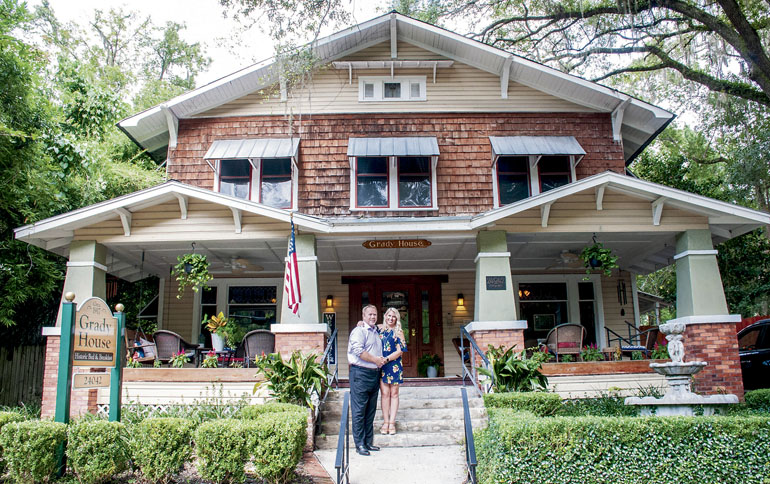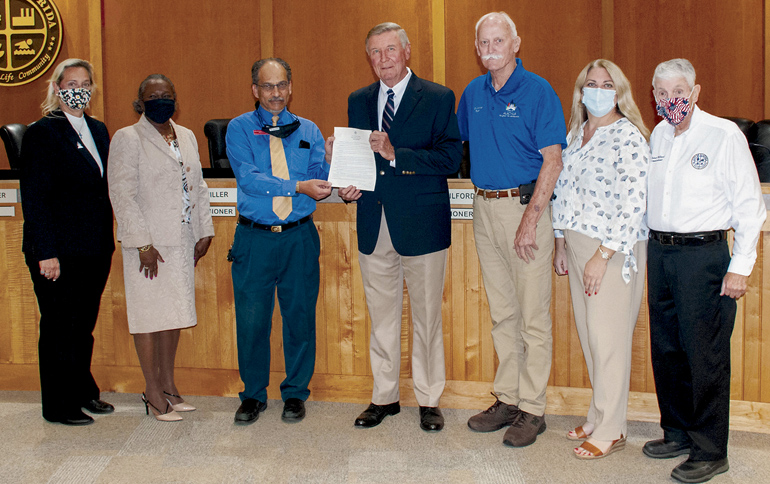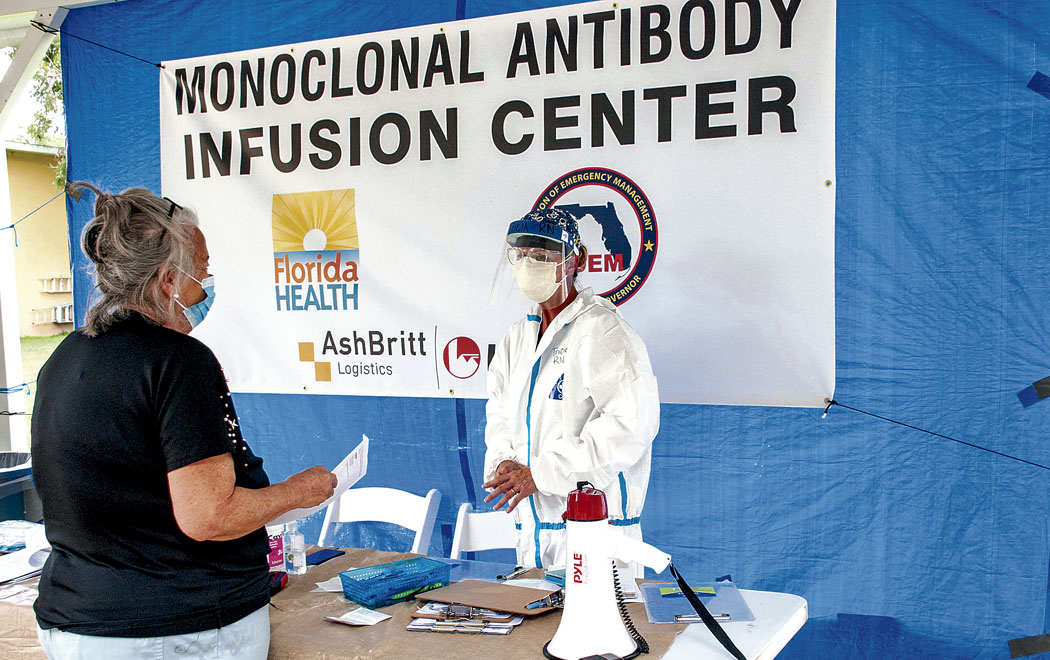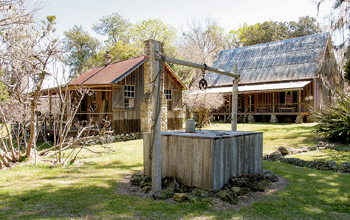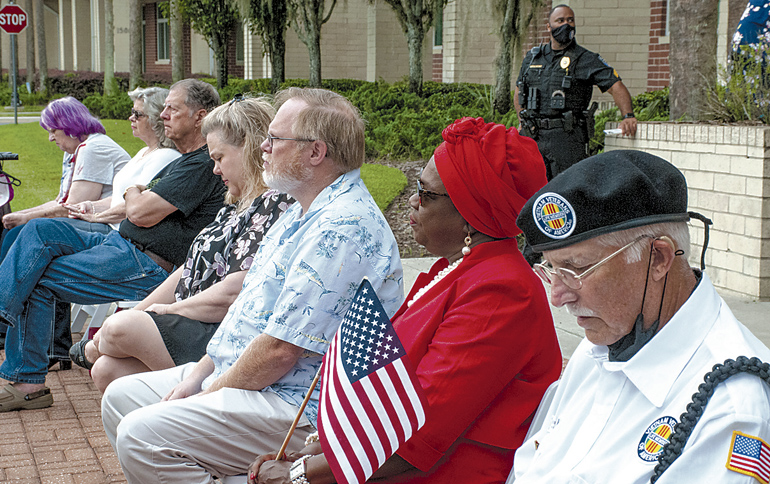Grady House Reopens with A New Vision
HIGH SPRINGS ‒ The COVID pandemic closed down the historic Grady House Bed and Breakfast in High Springs in summer 2020. The local landmark had long enjoyed a varied history as a residence, business and finally a historic bed and breakfast, but for over a year, it sat empty and still.
Prior to 1900, the location where the Grady House now stands was a bakery owed by German immigrant Charles Nisi and his family. Eventually, the property was owed by H. L. Grady who lived there with his family for many years. In 1917 a second floor was added, and the home was later used as a boarding house. One of the Grady House owners purchased the 122-year-old Easterlin House next door and transformed it into Skeet’s Cottage, a beautiful two-story Victorian home.
Over the years, a number of owners called the Grady House home, and in 1990, it was transformed it into a bed and breakfast. But by June 2020, the doors were shuttered as COVID claimed yet another business.
But a year later in summer 2021, Scott Towne and Sara Miller reopened the Grady House. Towne, originally from Mississippi, and Miller, originally from Missouri, learned that the Grady House was for sale and visited High Springs to see the property and get a feel for the community. “We absolutely loved the Grady House, along with the companion Easterlin House (Skeeters Cottage) as well as the gardens and event site behind the house,” said Miller. “We decided to purchase it and bring it back to its glory.”
Miller said that the feel of High Springs was just what they were looking for. “We also loved the community of High Springs and felt very welcomed by the people,” said Miller. “We want to be part of the community and contribute to it. We plan to be more than just a B&B, providing special events including music concerts in the back garden and host other special events for the community.” The sale was finalized Aug. 3 and Towne and Miller immediately began restoring the property. Within two months they were ready to open and had a ribbon cutting on Oct. 2.
The Grady House Bed & Breakfast consists of two separate houses and a large private garden on two-thirds of an acre, all within four easy walking blocks of downtown High Springs and restaurants and shopping. The two-story Grady House itself is large with five guest rooms, each named for a color — the Yellow Room, the Green Room, the Red Room, the Navy Room, and the Peach Room. Prices for the rooms range between $175 to $190 per night depending on which room.
The Easterlin House, also known as Skeet’s Cottage, is immediately next door, across a small patio and garden. It is a full-size Victorian house built in 1896, with a kitchen, living room, television room, two bedrooms and one full bath. The Easterlin House is rented as a full house for a single group or individual and is priced at $225 a night.
The Grady House is located at 410 and 420 N.W. 1st Avenue, High Springs. Additional information and reservations can be made by phone at 386-454-2206 or by visiting https://www.gradyhousebnb.com/
# # #
Email rcarson@
alachuatoday.com
Add a comment

